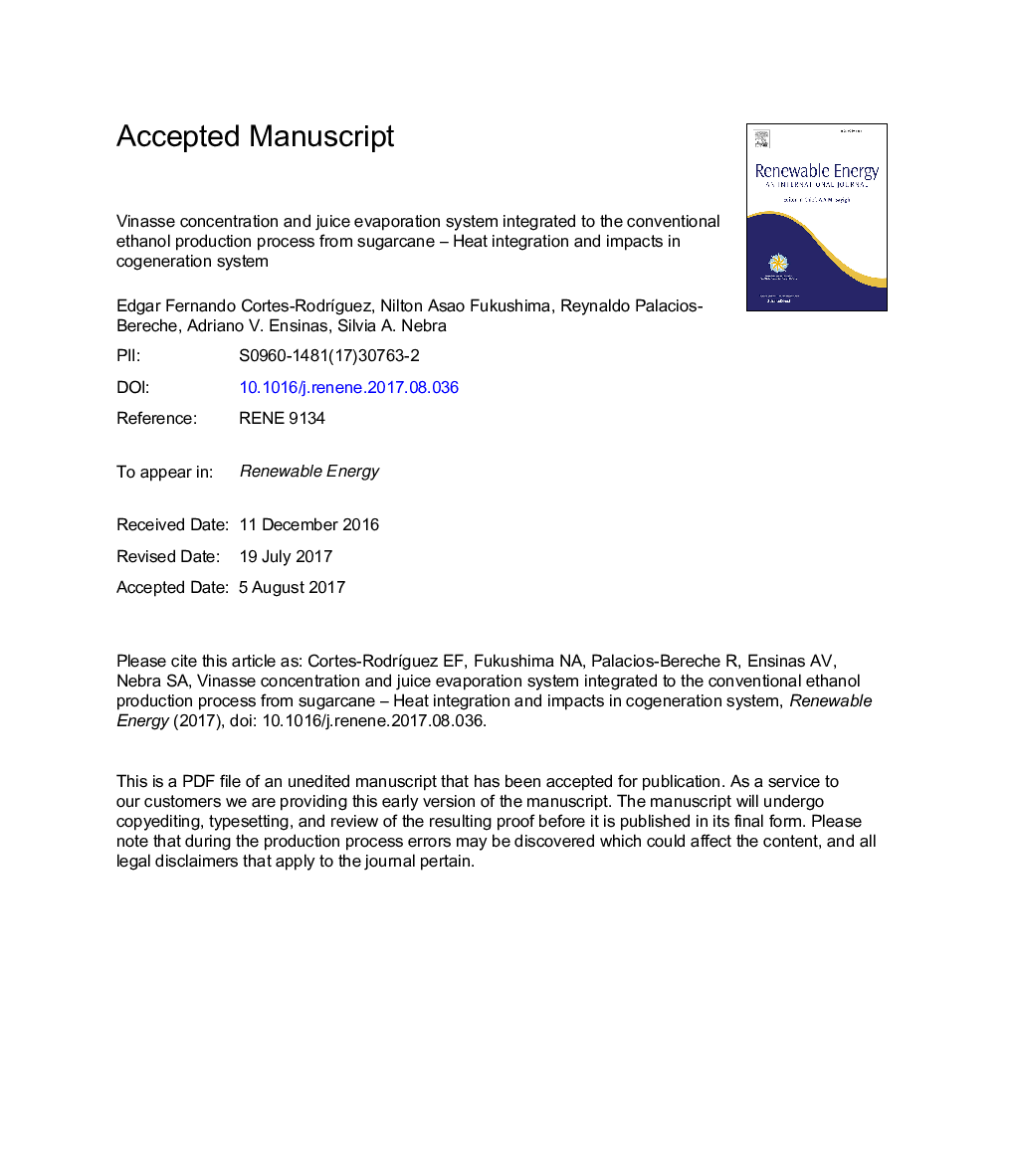| Article ID | Journal | Published Year | Pages | File Type |
|---|---|---|---|---|
| 6765241 | Renewable Energy | 2018 | 39 Pages |
Abstract
In the ethanol production process one of the most polluting residues is the vinasse, which is the bottom product of distillation column. Vinasse is produced in the range of 10-15Â L per litre of ethanol, and is currently used to irrigate sugarcane fields because of the presence of macronutrients (N, P, K) in its composition. However, because of the large amount produced, its disposition in sugarcane fields involves high transport costs and does not allow an adequate application, thus causing damage to soil and groundwater due to its high content of organic components. In this context, vinasse concentration with multiple-effect evaporator systems not only allows to reduce significantly its volume through the increase of its initial solids concentration, that is generally between 2 and 5%, which reduces the costs of disposal; but also allows to consider alternative ways of energetic usages, for instance, its incineration or anaerobic biodigestion. Thus, the aim of this study is to accomplish an energy evaluation of the heat integration of a juice evaporation system and a vinasse concentration system in the conventional ethanol production process by analysing three different configurations of multiple-effect evaporator systems. The energy and mass balances were solved using the EES® software while heat integration, using the Pinch Method, was applied in order to minimize the utility consumption. A simulation of the cogeneration system was also performed in order to evaluate bagasse and electricity surplus. Two configurations for the cogeneration system were studied: i) using back-pressure steam turbines and ii) using condensing-extracting steam turbines. Additionally, an economic assessment was performed in order to estimate the capital and operating costs, aiming to identify the most appropriate configuration. The results show that it is necessary to project the integration of these concentration systems taking into account the overall process. Furthermore results show that an appropriate integration of evaporation systems (Case2) could achieve steam consumption at the range of 345Â kg/t cane and electricity surplus for sale of 91Â kWh/t cane.
Related Topics
Physical Sciences and Engineering
Energy
Renewable Energy, Sustainability and the Environment
Authors
Edgar Fernando Cortes-RodrÃguez, Nilton Asao Fukushima, Reynaldo Palacios-Bereche, Adriano V. Ensinas, Silvia A. Nebra,
